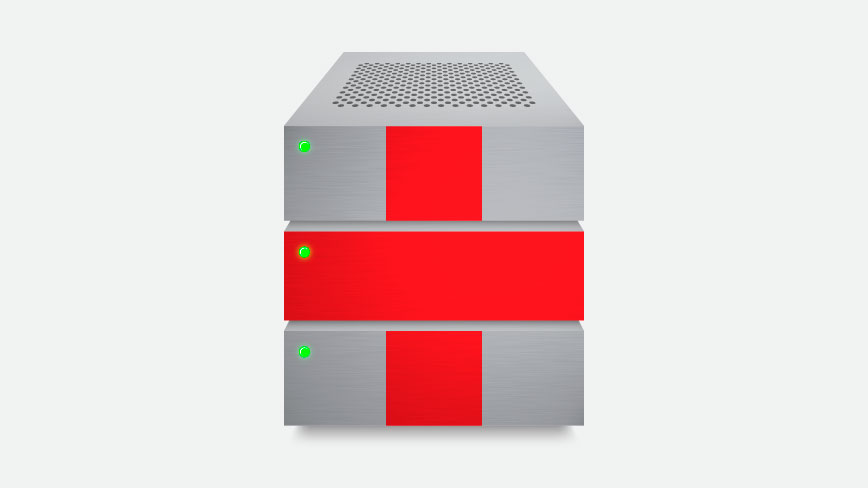Discover how healthcare data technology like electronic health records, data-sharing systems and encryption has been breathing new life into the industry.
Even though the medical industry holds on to its heritage, by still using the symbol of medicine — the rod of Asclepius, healthcare persists at the cutting edge of research, science and technology.
Looking at the latter, healthcare has become both a pioneer and a proving ground for the capability that data has for improving the world around us. Here are just some of the ways that data and technology are rewriting the rules of the healthcare industry.
1. Creating 360° Patient Records
Electronic health records (EHR) have been met with many growing pains and false starts during the transition from paper-based records, but the original intent still stands. Patients who move or who see many specialists throughout their life need a single, authoritative and up-to-date document for their medical history, especially their treatment history. As EHR systems improve, the data stored on them can prevent oversights that would otherwise impact care or potentially even endanger patients.
“Without access to this data,” Mark Scott writes, “your primary care doctor may prescribe you a drug that could have adverse effects on a heart condition your cardiologist diagnosed, simply because the two systems where this information resided were not talking to each other or your care was delivered and documented by a physician in a different medical group.”
2. Sharing Data Across Institutions
Going beyond storing and sharing individual patient data, groups concerned with population health as a whole can benefit from sharing anonymized health data between institutions. For instance, one of our earlier posts highlights how shared data is helping in the fight to eradicate breast cancer.
Even more recent innovations may allow for improved diagnosis of a broader group of conditions by monitoring their risk factors. Recent winners of the “Closing the Data Divide Virtual Challenge,” Children’s Hospital of Philadelphia fellows Dr. Marc Tobias and Dr. Naveen Muthu, revealed a prototype system dubbed “Population Health Risk Assessment Support Engine” (PHRASE). It gives providers access to the latest public health data on population risk factors while uploading anonymized data to public health institutions to improve their studies.
Being able to directly quantify incidences of a particular disease from EHRs “brings the public health community closer to front line providers,” said José Lojo of the Philadelphia Department of Public Health, exhibiting the potential that healthcare data has for informing policy at the top-down level.
3. Creating Demand for Stronger Data Security
Some of healthcare’s data-based breakthroughs have less to do with the positives of what technology can offer and more with its consequences. A report on healthcare data breaches revealed that one in three Americans have become victims of wide-ranging breaches at major institutions like insurers Premera Blue Cross and Anthem. The vast majority of these breaches — 98% — originated from network intrusions rather than theft of information-containing devices like laptops, as had been the case in the past.
Incidents like these are less about shaming companies and more about collective learning experiences. Healthcare payers and providers are being specifically targeted for the high value of their data, after all. According to a Ponemon Institue report, the average black market price of stolen protected health information (PHI) runs $154 a person.
Because of the problems concerning breaches, the industry will need to focus on encryption initiatives, says The Wall Street Journal. These efforts come in the form of new types of encryption, as well as adherence to safe practices as we know them. WSJ notes that around 55% of data compromises result from failure to properly encrypt data, placing healthcare at the front lines of the learning curve for how to secure our personal data on a massive scale through policy, training and new solutions.
Such incidents force companies to learn how to respond to them regardless of their root cause. As Annalect reported, there has been a shift where brands are now much more apt to notify customers of a breach and to design their responses of cyber intrusion with the emotional phases that consumers experience in other stressful life events.
Anthem responded quickly to a 2014 breach by notifying customers of the incident and securing $2 million in available insurance against losses. Springfield, Mass-based Northgate Medical P.C. responded in much the same way to a recent breach in April 2016 when an exited employee illicitly copied patient data for marketing purposes.
However, companies may still face liabilities and a loss of confidence in their services, even in an industry like healthcare where customers have limited alternatives. Disclosure is but one step in a larger effort to train employees, encrypt all necessary files and enable constant oversight around data access. Increasing scrutiny, along with a concurrent rise in the volume of digital PHI, means that harder lessons in data management may still be on the horizon, with healthcare at the forefront of the battle.

